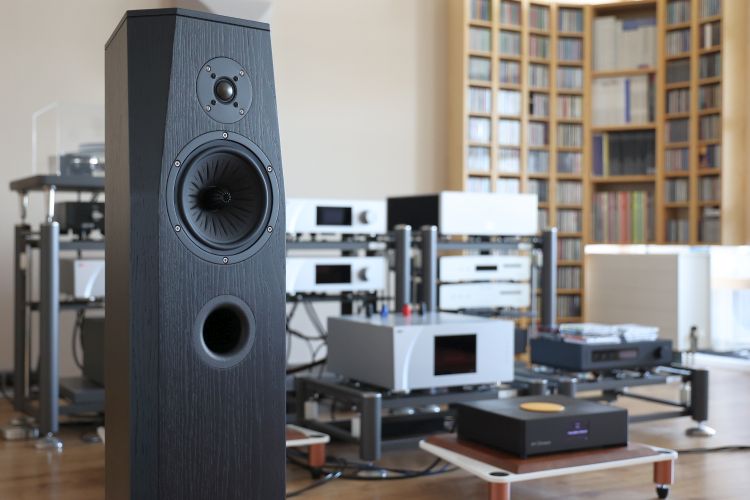
Main system
Next, I moved the Premium Model 2Ses to the main system to be powered by the CH Precision A1.5, starting with the Mad Scientist Black Magic speaker cables that I normally use in this system.
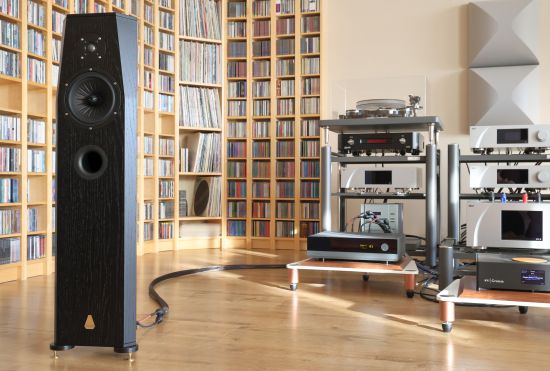
If there were any lingering concerns regarding the speakers’ bass behavior in the small room, these were now totally and utterly obliviated. Set up in the same positions as the Magicos, the Premium Model 2S are again highly rhythmic, engagingly tuneful, and quite deep in the bass, yet extremely well-controlled and absolutely not rounded, sweetened, or fat. As in the other setup with the Ayon tube amplifier, the bass is not only precise but also possesses an addictive boogie factor.
Surprisingly, since very nearly all ported speakers so far have sounded slightly boomy compared to the close-cabinet Magicos, the Driades behave absolutely exemplary. There is simply ZERO overhang! Actually, I’d say that the bass is even more articulate and precise than that from the Magicos, go figure!
Initially, it seemed that the speakers did not focus quite as well as I was used to but this was quickly remedied by toeing them in just a little more than normal. Now, the sound clicked together, with superb focus. I also noticed that the speakers are best not positioned too close to each other. When initially placed in-between the Magicos, with 160cm clearance, the midrange was too hot. Simply moving the speakers further apart into the Magico’s positions (with 220cm clearance) proved to provide a more ideal balance where the midrange remains a little forward compared to what I am used to but with great focus and captivatingly energetic delivery. This is what the speakers were designed for: to transfer lots of information in the most expressive manner. Well, they certainly perform as intended!
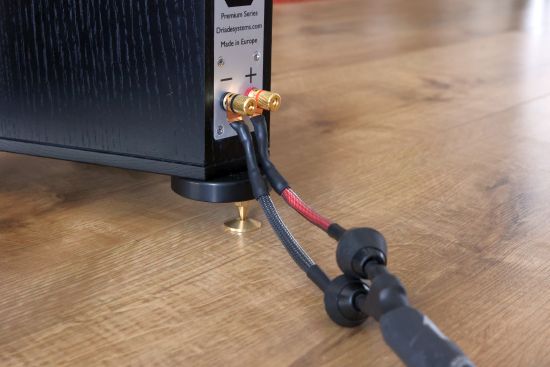
It occurred to me that Driade delivery alludes to the directness and communication that I experienced with AvantGarde Uno G2 horn speakers, but this time with imperceptible transitions and no coloration.
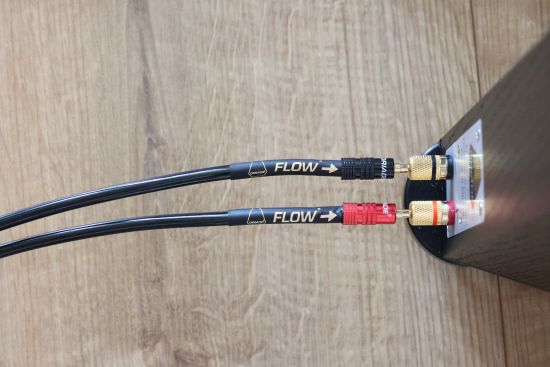
The Mad Scientist cables are admittedly very revealing and direct and relatively dry, and while that works very well with the Magicos, a swap to the Driade Flow 405 makes for an immediately more relaxed and arguably more musical performance. Sure, the upper bass becomes rounder but the midrange gains a seductive lushness and now comes across as less prominent while the speakers retain their engaging pacing and expressive liveliness.
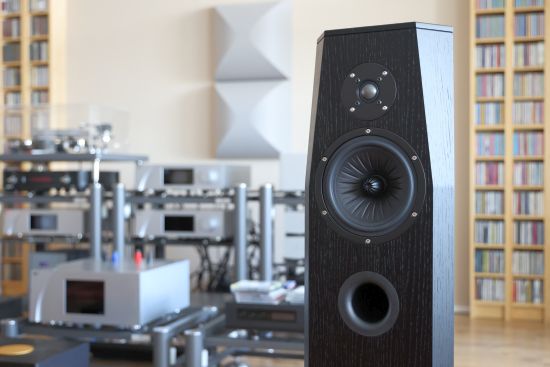
The recurring feeling I have with these speakers is that they are very much all-eaters. I mean, they bring out the best of every music style, and no matter what you play, even mediocre recordings, they always turn in a musically engaging performance without fail.
I did stumble on one aspect of the Premium Model 2S’ performance that I felt could be considered less than ideal, which is that for their incisive pacing and immense openness and expression, the uppermost treble was not quite as airy or as detailed as I would like. Admittedly, I have been spoiled by the Magicos and my past ribbon adventures, and I should add that the Driade cables do work more synergistically in this respect than the Mad Scientist cables. In discussing this with Arnold, he explained that the speakers have, by design, a gentle rolling off of the uppermost treble above 14kHz. This is a conscious decision, implemented to ensure ideal pairing even with affordable audio components that often don’t sound as cleanly or as refined as high-end equivalents.
The Driades’ tuning allows for a measure of roughness and bad harmonics from the components upstream, avoiding harshness while still providing a hugely informative and expressive performance.
Besides, my criticism is entirely unfair anyway as I keep forgetting that I am listening to speakers that cost 5.000 euros per pair, not 15, 20, or 25. Such is their benchmark-setting bass performance and positively spirited and hugely involving overall performance, that, had I not known their retail prices, I would have assumed they inhabit a much more elevated price category.
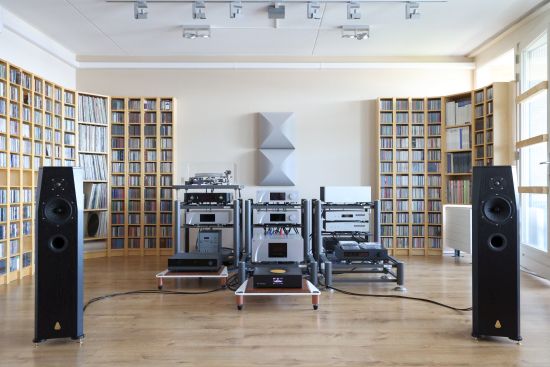
I already hinted at the speakers’ timbral neutrality and the lack of cabinet sound and these observations are further confirmed in the more transparent main setup. Although the speakers’ midrange is prominent, the performance comes across as very neutral, and even more importantly, entirely natural. The timbre is spot-on and there is simply not even a hint of artifice. I can hear the woofer paper/carbon cone material but this is actually a compliment as I much rather hear the natural slightly papery quality than an unnatural thickened, colored, or synthetic sound that can be produced even by some high-tech plastic or composite material woofers. And I’m not ashamed to admit that I hear more thickness and coloration in the Magico’s woofers!
Although I don’t usually play very loudly and the Premium Model 2S certainly does not need high volume levels in order to sound open, communicative, or involving, the speakers have absolutely no problem playing at hurricane levels!
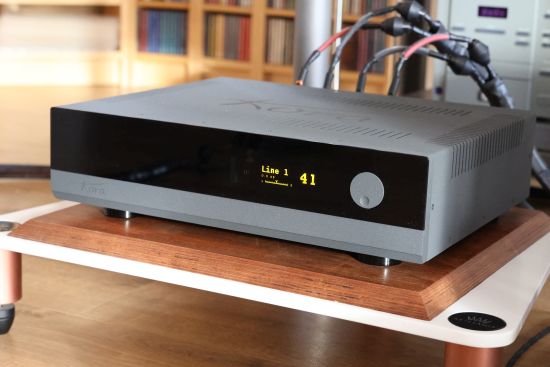
Kora TB140
Along with the Driade loudspeakers, Arnold also dropped off an interesting integrated amplifier, the Kora TB140, which is a hybrid tube/transistor design. Mind you, this is not the usual tube preamp/transistor poweramp design but a true hybrid in which four triode tubes deliver a symmetrical voltage signal directly to the output terminals which is augmented by four transistors for the current. This only scratches the surface of its technology but I will save the details for a separate review.
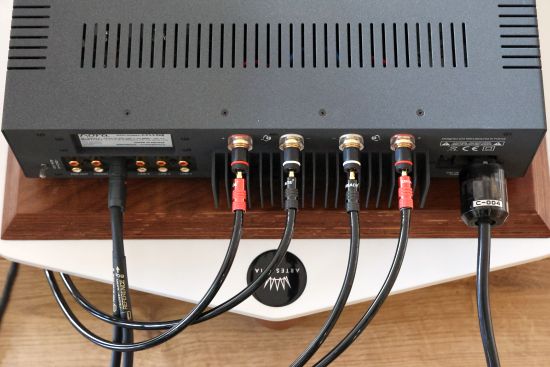
As Arnold explained, he was so much enamored with the performance of the Kora-Driade pairing, that he decided to become a dealer for the brand. What’s more, Driade offers a package deal where you get a free set of Driade Flow 405 speaker cables with the purchase of the Premium Model 2S speakers and the Kora TB140 amplifier.
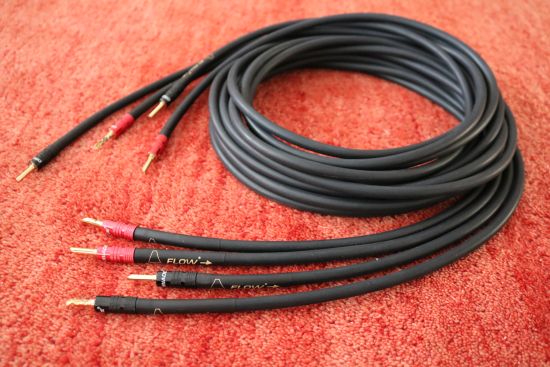
Driade Flow 405 speaker cable
So, how does the Kora amplifier sound? In a word: fantastic! Truly, I was not ready to hear this level of performance from a 5000-euro amplifier. I tried the Kora in both of my systems and with a wide range of cables and no matter the pairing, this amplifier turns in a performance that is closer to that of my CH system than it has a right to.
Contrary to what one might expect from a hybrid tube amplifier, the Kora does not sound creamy, fat, overly smooth, or rose-tinted, but rather extremely quick and articulate, super-expressive, and ultra-linear and transparent. With these qualities, it does indeed maximize the Premium Model 2S’s key strengths. Of course, the Kora utilizes a unique concept which they call SquareTube (which I will go into in the dedicated review), but no doubt, its pure and direct sound also has a lot to do with the absence of output transformers which in most cases are responsible for that typical “tube” sound.
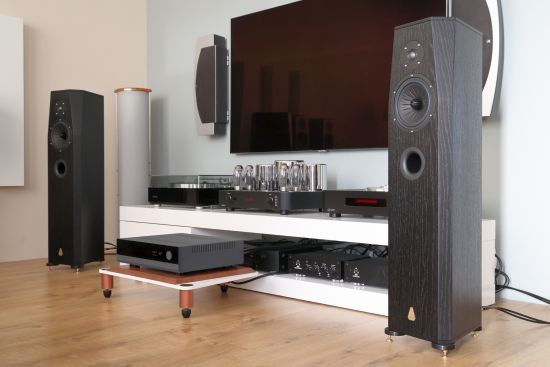
The best way to illustrate this is to go back to the Ayon in my secondary setup after having listened to the Kora. The Ayon Spirit III is a KT-150 push-pull tube amplifier and it has that Ayon-typical full, sonorous, dark, and robust sound. It also has a more colorful midrange while it largely avoids rounding or adding creaminess or smear. One could argue that the Ayon makes the Premium Model 2S sound easier on the ear, warmer, more euphoric, and perhaps more romantic, and I will not disagree. However, I will counter that you will not have heard all that these speakers have to offer in terms of resolution, bass performance, speed, expression, and lightning-fast transients if they are not used with an amplifier as good as the Kora.
One thing to keep in mind is that the Kora does not do any editorializing of the signal, it does not add warmth and it certainly does not add a nice sauce to cover any flaws upstream. This is another reason why the Driade combo offering is such a great idea. As I knew from earlier tests, the Driade Flow 405 speaker cable offers an appealingly smooth, rich, and fluid delivery, coupled with great finesse, which as my final tests confirmed, works really well with this pairing.
Sidenote – The (in) validity of the Knuckle Test
At some point, it was popular to judge speaker cabinets by how “dead” they sound, and this was done simply by rapping them with your knuckles. A hollow sound was considered no good and really the only way that a speaker could pass was by basically responding like a solid piece of concrete. Well, the collective speaker designer guild has learned a thing or two since then, and Arnold certainly has his own viewpoints.
The interesting thing is that despite not passing the old knuckle test, the Premium Model 2S has absolutely no cabinet coloration that I can detect. Here’s what Arnold has to say on the matter.
The cabinet isn’t hollow, but if you knock on the outside in certain spots, it can indeed sound as such. The important thing is that when excited from the inside out, it doesn’t. The “hollow” sound that you can hear when rapping the cabinet with your knuckles is direct feedback from the hard, 2-sided veneered MDF. Especially the shape of the cabinet, the division of the cabinet into 2/3 at the top and 1/3 at the bottom, and the type and careful placement of the damping material, ensure the bass precision.
The Premium Model 2S does not use a bass reflex cabinet, as it is usually calculated and damped. The long, large port also works very differently, because the air volume behind the port to the angled and narrow rear wall is more decisive here. And of course, there are some other aspects that are responsible for the great bass that you observed.
Sidenote – Port Placement
I asked Arnold about the placement of the port on the front side of the speaker. The common accepted wisdom is that this makes it easier to place speakers near rear walls but there is also some consensus that it would be more logical to have the port in the rear as the air then breaths in sync with the woofer membrane movements, rather than in reverse. Arnold replies:
A bass reflex port or system has so many (in)dependencies that it is not just about the placement of a hole in the front or the rear with a tuned pipe in it. A port at the back gives extra reflections from a back wall and when the speakers are pointed inwards there is a higher risk of doubling the acoustic output near a corner. This, of course, only applies if they are not freely set up.
Incidentally, the Driades do not have a normal bass-reflex system, otherwise, the lows would not be as fast and defined and the speakers would not be able to play so loudly at low frequencies. They also go >10 Hz lower than a standard calculated bass-reflex system.
The shape of the cabinet is one of the essential aspects. The extra separate internal cavity at the bottom is also an essential part of this design. And so there are some more aspects, e.g. driver structure, cabinet construction (bracing), damping, etc., which provide a different low and mid-low reproduction.
The notion that forward woofer motion sucks the air in from the outside into the bass reflex pipe and into the cabinet volume and vice versa, is correct, but they do this at a different frequency. Besides, the woofer is active and the air is passive.
With a closed cabinet, it is easier to achieve low coloration, but this system also has many disadvantages.
In summary, clearly, there is much more to music reproduction than having an acoustically dead cabinet, or achieving a perfect measured linear response, for that matter. It is all in the speaker’s design, and with the Driades, the musically engaging results speak for themselves!

Conclusion
The Premium Model 2S surprised me by sounding superbly confident, lively, and beautifully expressive. The speakers are also remarkably well-behaved in the bass which is deep and super-articulate and not at all thick or boomy. Most impressively given their ported design is that the Premium Model 2S produced the best bass I’ve heard from any speaker. Better even than that of my Magico S1 MkII’s.
There is a prominence in the midrange but the speakers are timbrally spot-on and very neutral and most importantly, entirely natural. PRaT is also a very strong asset and there is no audible transition from woofer to midrange which further adds to their immensely solid and coherent delivery.
It occurred to me that Driades’ delivery contained aspects of the appealing directness and communication that I experienced with horn speakers, but this time with imperceptible transitions and no coloration.
The speakers are not fussy at all and they are designed to be easy to drive and voiced such that they will work splendidly with any amplifier. They are also musical omnivores. That said, their performance can be maximized in the direction of speed, tightness, openness, and expression by using a supremely transparent amplifier like the Kora TB140, and honestly, I know of no better amp at its price, or pulled more toward the warm and romantic, by using an amplifier such as the Ayon Spirit III.
Ultimately, all speakers are voiced one way or another. I’m excited to come across a pair that sounds different from the majority out there, and at a price that should make the decision very easy.
External Links
Manufacturer and worldwide distributor: Driade
Driade Flow website: theflowcable
Kora website: Kora.fr
Contact Driade
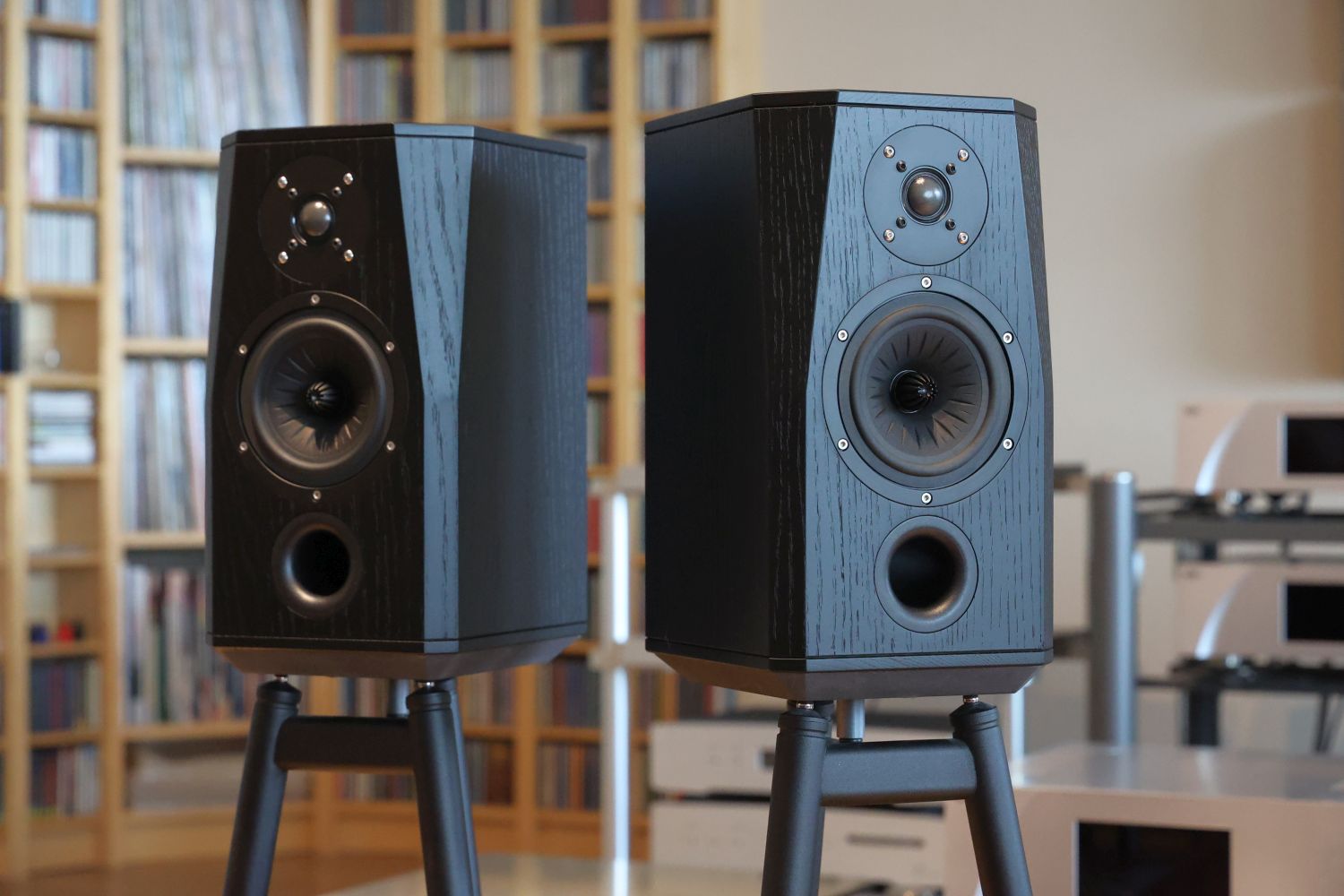
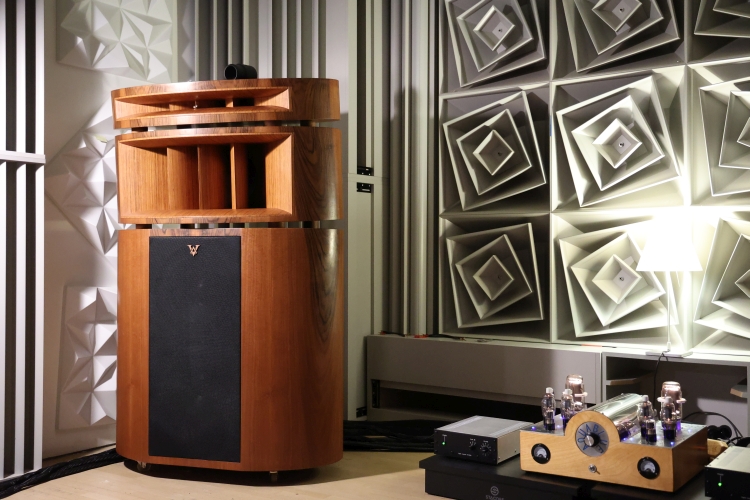
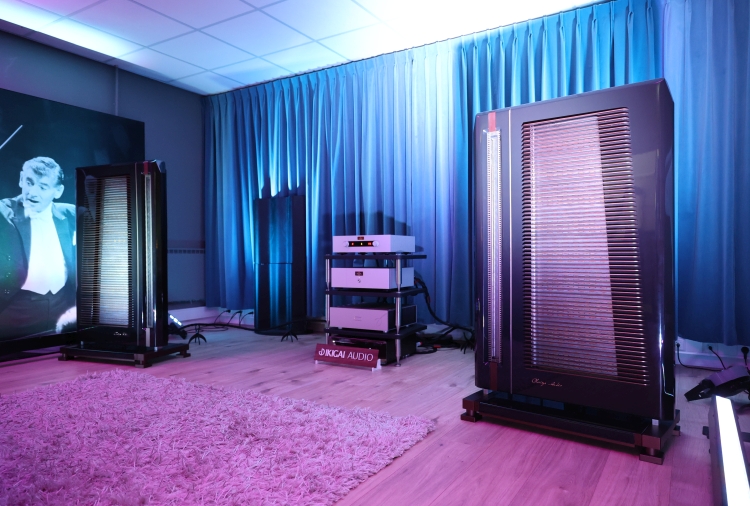
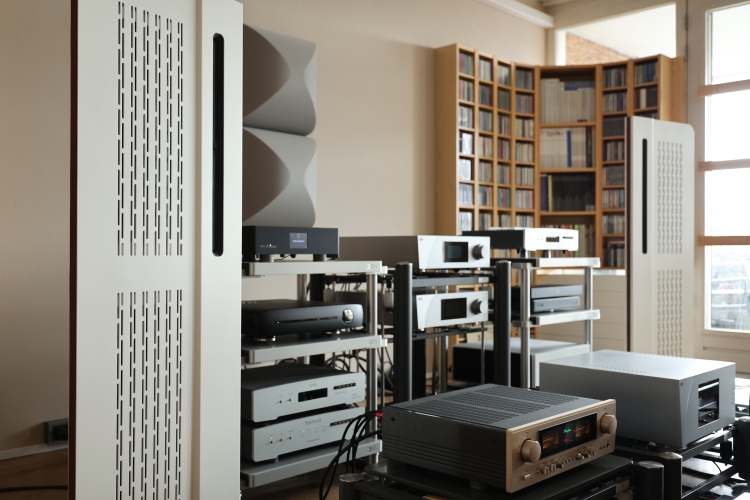
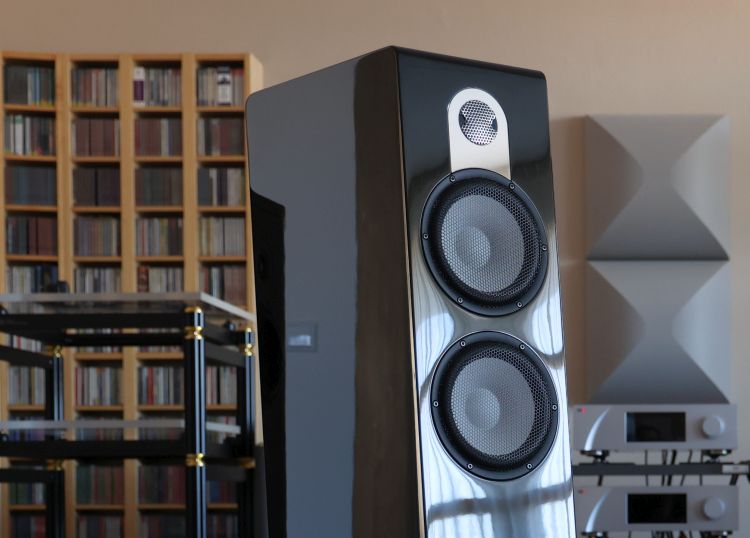
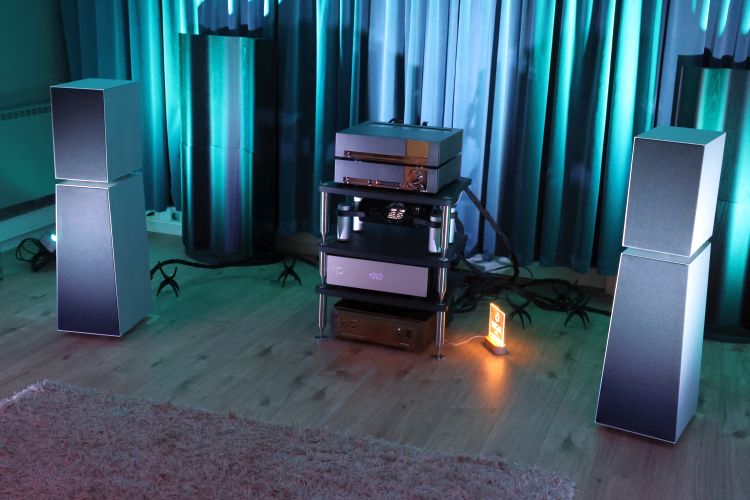
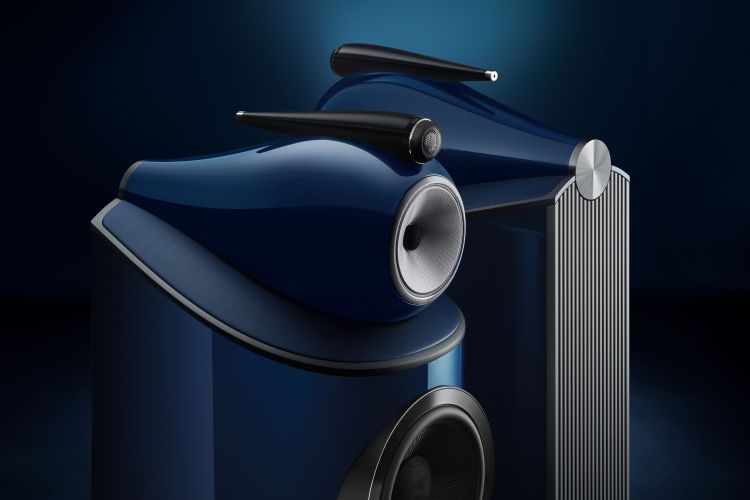
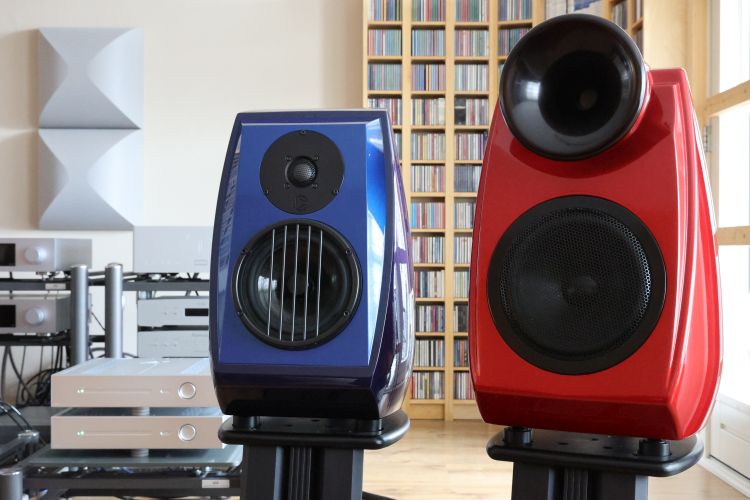
Another glowing review of a bass reflex loudspeaker.
Such a shame. 100% distortion from port, because it is not in phase.
Try a sealed enclosure some day. You will see the light. When all is in phase, magic.
In the review, I actually mention that I normally use sealed speakers and I go into detail about the phase and other issues that do indeed often exist with ported speakers, but interestingly not with the Driades.
Dear Wayne,
Distortion and phase are two completely different entities. As Christiaan has mentioned in his review the Driade loudspeakers have no standard bass reflex port and no standard bass reflex enclosure. A sealed enclosure has as many disadvantages as an open enclosure. I could write a book about it 🙂
After designing more than 100 production loudspeakers including driver development for many known brands over the last 35 years, you can be sure that I know what I am doing.
Kind regards,
Arnold
http://www.driadesystems.com
Great review and very nice to see self-made pictures with the review.
I see you’ve also reviewed the avantgarde speakers. It’s a different speaker in a different price range, but which one would you choose pared with a tube amp? These very nice driade speaker or the (magical) avantgarde horn speakers?
I can imagine these driade speakers are easier to let them sound good with different types of music, but these horns can do something special as well.
Thank you in advance for your reply.
While the AvantGardes look special and extravagant and I really wanted to like them for their aesthetics as well as their expression and dynamics, I found them ultimately to sound uneven and tiring. Presumably, my room and 4-meter listening distance were not enough to make the 3 spaced-out drivers sound coherent. Instead, the transitions from driver to driver were all too audible, especially with vocals. From attending many audio shows, I know that later models apparently do better than the Uno G2’s that I had on visit, and also that the coherence issue can be mitigated with a greater listening distance, but still, at these shows at least, I always find them to sound shouty. Of course, AvantGarde tend to demo with solid-state amplifiers, not low-watt tube or SET, so my impressions are not fully balanced. The Driades, interestingly, have some parallels with the AvantGardes in that they, too, sound beautifully dynamic and expressive, but with great driver integration and coherence. The Driades are indeed much easier to integrate in a room and they are also more universal in their abilities. In the end, the Driades are not horns and horns do indeed have a certain direct-coupled, intimate and powerful presentation that other speaker principles do not have to the same extent. But in the end, it is always about balance. As I get older, I tend to prefer products that do well across the line, over those that excel in a single area and do less well in many other. Ultimately, the choice is of course a personal one.
Christiaan, thank you for your extensive reply.
I’ve not heard the ‘older’ AG speakers but have heard the UNO XD speakers with Unison Research tube amp and a 300B tube amp.
That last combination gave me goosebumps, with music I normally don’t even like. I did try to notify the lack of coherence but didn’t seem to hear it. I did offcourse hear some horn coloration and wonder if these speakers only do magic in particular situations, or that they sound great across the line, like you say the Driades do.
I’ve visited Arnold once to hear the premium 2 and 3 model and like those 2 a lot! Like you say in the review, they are very big, transparant en easy to listen to. It’s hard to make a decision and I guess I have to visit the Dutch Audio Event to listen to the 2 different brands once again.
Again, thank you for your reply.
Kind regards,
Hi Leroy, When you go for another listen at a show, make sure to bring some of your own music or ask them to play something (preferably several different styles) that you know well.
Will do Christiaan, thank you!
That 7 inch Carbon Fiber Paper midbass looks really good.
I agree, and it IS really good, too! 🙂